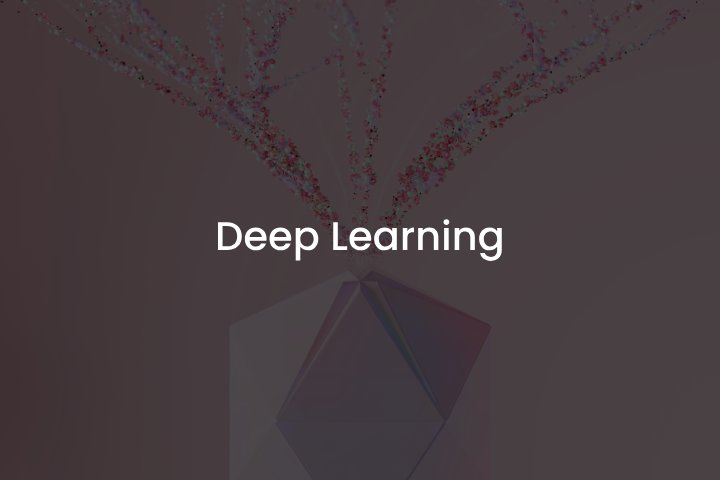
Deep Learning: The Power Behind Modern AI Innovations
Having emerged to surpass other AI methods in productivity and correctness, Deep Learning (DL) allowed human efforts to be reduced in training the software to receive satisfying outcomes. This technology powered advancements in various use cases, like digital assistants and autonomous cars, by simplifying the identification of diverse input data and the generation of informed outputs.
Let’s delve into the artificial intelligence topic and learn what DL is and how people use it in their everyday lives (maybe even not knowing that).
What is Deep Learning?
Similar to how our brain features several layers of connected neurons, this AI subset can handle information such as images, text, or audio, deliver smart insights, define similarities, and utilize tasks without manual intervention. DL assets leverage several tied digital networks capable of generating decisions typically inherent to human intellect.
The method is widely used in digital assistants, self-driving cars, and even in crime detection activities for its unique ability to recognize spoken sentences or classify images. Specifically trained on predetermined algorithms and sets of instructions (related to the industry it’s utilized for), DL models can make precise predictions and automate a number of tasks in automotive, health care, manufacturing, aerospace, and other fields.
Automatic Speech Recognition (ASR)
With Spotify audio transcriptions and Zoom meeting text records, ASR is no longer a surprising technology. AI-powered, it transforms spoken language into written words, offering high accuracy and diversifying tones and accents. Speech recognition is utilized by companies’ customer support, educational institutions, hotels, etc.
How ASR Works
Organizations commonly use two approaches to converting speech into text. Traditional hybrid models are the most widespread ones despite their apparent gaps in accuracy. This method combines Hidden Markov Models (HMMs) with Gaussian Mixture Models (GMMs), relying on lexicon, sounds, language, and decoding components to describe speech.
An end-to-end approach uses neural networks to map audio features directly to text, reducing the need for several models applied in a hybrid method. This newer approach is available in several architectures (CTC, LAS, and RNNTs) and offers improved accuracy with minimum manual intervention.
Automatic Speech Recognition Features
Key components of ASR systems include:
- acoustic models for analyzing audio waveforms and identifying spoken words;
- language models to predict word sequences;
- custom vocabularies that boost performance for specific terms.
ASR systems also often incorporate speaker diarization to detect the other person and sentiment analysis to guess their emotions. There are also metrics such as Word Error Rate (WER), which measures the accuracy of transcriptions by comparing them to human-generated text.
Key Applications of ASR
Automatic Speech Recognition technology plays a significant role in various spheres of everyday life. The most common cases are:
- telephony – to provide tracking and analytics;
- social media – for real-time captions and content categorization;
- media monitoring – to track brand mentions in broadcasts and improve advertisements.
- virtual meeting platforms like Google Meet – to generate meeting transcripts and store records.
The integration of ASR pursues different goals, highlighting its versatility and positive impact on modern technology.

Image Recognition
Similar to human visual perception, AI-driven identification allows machines to learn and interpret complex digital illustrations. From detecting objects to predicting actions, the use of DL techniques advances multiple sectors.
Understanding Image Recognition
Convolutional Neural Networks (CNNs) are at the core of the process, excelling in analyzing visual data through various training samples and large datasets. AI models can compare labeled illustrations with found objects, people, and scenes, classify them, foresee activities, and even create 3D reconstructions.
Examples of Deep Learning in Image Recognition
While earlier computer vision was limited by facial and object identification, now DL has transformed image recognition and expanded its integration across multiple sectors:
- In self-driving cars, the technology identifies road signs, obstacles, and pedestrians for safe navigation.
- Social media platforms use image identification to tag users in photos and organize content automatically.
- In healthcare, CNNs help to detect diseases such as cancer at earlier stages.
- Security systems apply it to enhance surveillance and access control.
These examples showcase the profound impact of DL on improving accuracy and expanding the landscape of image recognition usage.
Conclusion
DL stands at the core of AI, enabling computers to replicate the human brain’s functions, and handle complex tasks like speech and image interpretation, therefore making the lives of millions of people much easier. By applying wide artificial networks and advanced instructions, DL facilitates improvements in diverse fields, from medical institutions to the automotive industry.
ASR and CNN models exemplify its significant impact, providing enhanced accuracy and functionality in translating speech into text and detecting visual content in real-time. As the technology continues to develop, its integration will soon expand, pushing innovations to a broader range of industries.


